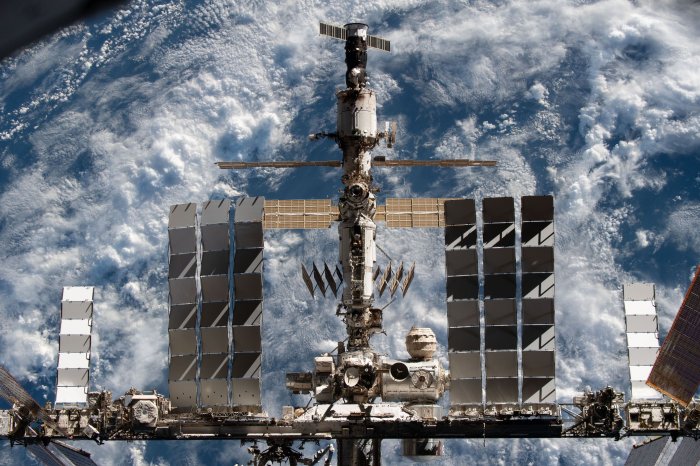The RCW 49 galactic nebula is one of the brightest star-forming regions in the Milky Way, with researchers saying they have created the clearest image to date of a stellar-wind driven bubble where stars are born. Photo courtesy of NASA/JPL-Caltec/E.Churchwell/University of Wisconsin
June 23 (UPI) -- Researchers at the University of Maryland have created the first high-resolution image of an expanding bubble of hot plasma and ionized gas in which stars are born, published as part of a study published Wednesday by the Astrophysical Journal.
The image revealed that a single, expanding bubble of warm gas surrounds the Westerlund 2 star cluster, one of the brightest, most massive star-forming regions in the Milky Way galaxy, the researchers said.
This contradicted the findings of earlier studies suggesting there may be two bubbles around the cluster, they said.
"When massive stars form, they blow off much stronger ejections of protons, electrons and atoms of heavy metal, compared to our sun," study co-author Maitraiyee Tiwari said in a press release.
"These ejections are called stellar winds, and extreme stellar winds are capable of blowing and shaping bubbles in the surrounding clouds of cold, dense gas," said Tiwari, a postdoctoral associate in astronomy at the University of Maryland in College Park.
She and her colleagues were able to measure the radius and mass of the bubble surrounding Westerlund 2, as well as the speed at which it is expanding.
For this study, Tiwari and her colleagues used data collected by the Stratospheric Observatory for Infrared Astronomy telescope to analyze Westerlund 2.
They created a clearer picture of the bubble surrounding Westerlund 2 by measuring the radiation emitted from the cluster across the entire electromagnetic spectrum, from high-energy X-rays to low-energy radio waves.
Previous studies, with only radio and submillimeter wavelength data, had produced low-resolution images and did not clearly show the bubble or reveal how it expanded into the surrounding gas, according to the researchers.
Tiwari and her colleagues were also able to create a 3D view of the expanding stellar-wind bubble surrounding Westerlund 2.
In addition to finding a single, wind-driven bubble around Westerlund 2, the researchers found evidence of new stars forming in the shell region of the bubble,.
As the bubble expanded, it broke open on one side, releasing hot plasma and slowing expansion of the shell roughly a million years ago.
However, about 200,000 or 300,000 years ago, another bright star in Westerlund 2 evolved, and its energy re-invigorated the expansion of the Westerlund 2 shell.
The researchers said they will now apply the method to other bright star clusters and warm gas bubbles to better understand these star-forming regions of the galaxy, as part of a NASA-supported program called FEEDBACK.
"We saw that the expansion of the bubble surrounding Westerlund 2 was reaccelerated by winds from another very massive star, and that started the process of expansion and star formation all over again," Tiwari said.
"This suggests stars will continue to be born in this shell for a long time, but as this process goes on, the new stars will become less and less massive," she said.
The International Space Station is pictured from the SpaceX Crew Dragon Endeavour during a flyaround of the orbiting lab that took place following its undocking from the Harmony module’s space-facing port on November 8. Photo courtesy of NASA
















